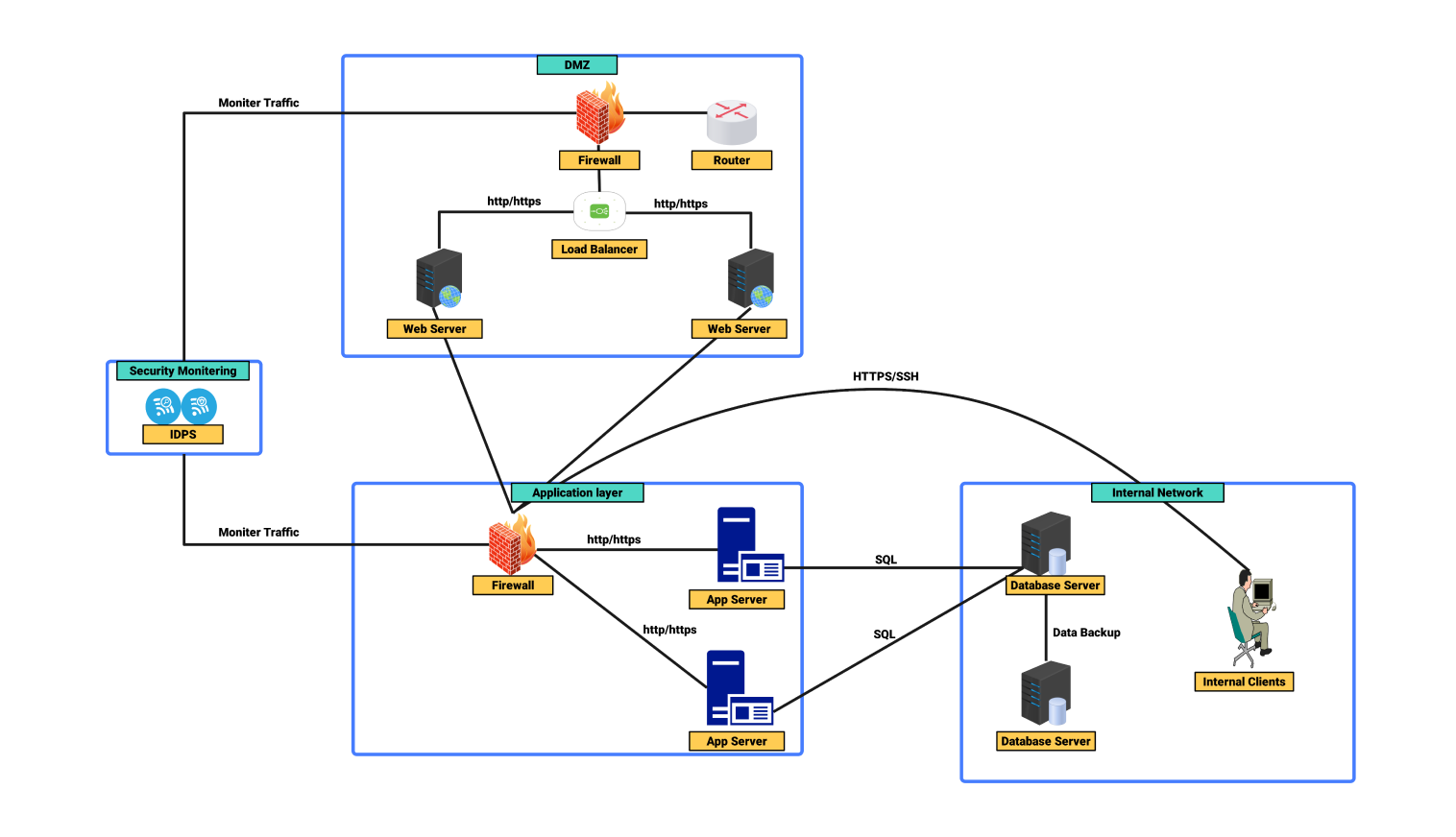- All templates
- Network diagram templates
- Network diagram 5g
About this network diagram for 5G
The following 5G network diagram shows the architecture of the 5G network. It involves the flow of data as well as the controls. This network architecture explains how 5G works and the services they provide.
This includes the user device, access network, core network, and external data services such as the Internet. Also, the diagram's elements are labeled. This shows their roles and links to other elements.
Located towards the upper left corner, the user device is linked to the 5G base station labeled as gNodeB. This is accomplished through radio frequency links for data and a control plane for signaling. Once again, the gNodeB is a crucial device. It relays user-initiated data and control infrastructures to the 5G core network.
The core network in 5G comprises many important components performing assigned tasks. The access and mobility management function (AMF) is key. It manages authentication, mobility, and session provisioning and termination. It contacts other core network functions. These include the session management function (SMF) that sets up the session, and the authentication server function (AUSF) that handles safety issues. Such a network of functions helps make communication safe as well as work.
The network diagram shows the need to manage user subscription data. It also shows the UDM's (unified data management) functions. Likewise, the UPF (user plane function) manages data traffic. It routes data to the outer internet.
The PCF (policy control function) implements policies. The NSSF (network slice selection function) also does this. It allows network slicing to cater to different types of services.
Also, arrows show the sequence of some processes. For example, authentication, policy control, then data traffic. Such interfaces keep the 5G system components inter-connected. They ensure information is conveyed easily between them. The core 5G network is depicted as the center performing these activities while linking to the access network through gNodeB and the internet.
The network diagram for 5G in general is designed in such a way that it aims at depicting the 5G network architecture in all aspects. Its simple design as well as the clear tags placed on the direction of the flow of the information shows the relationship between different functional blocks of a 5G network. So, this is a useful structure. It helps to grasp the basics of 5G communication systems.
Related templates
Get started with EdrawMax today
Create 210 types of diagrams online for free.
Draw a diagram free Draw a diagram free Draw a diagram free Draw a diagram free Draw a diagram free








